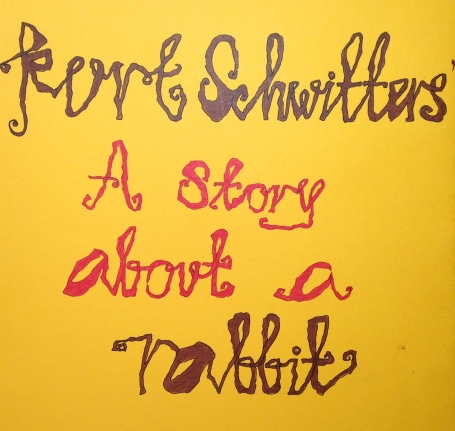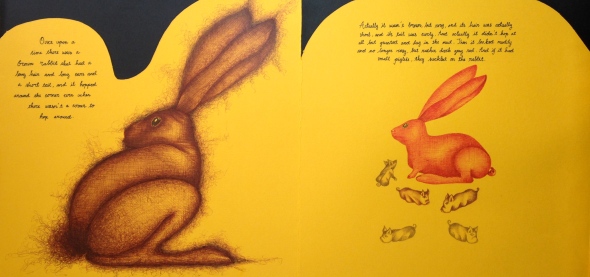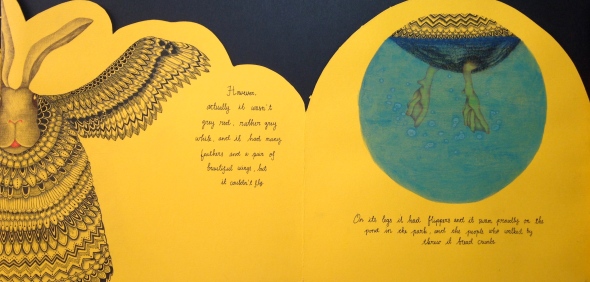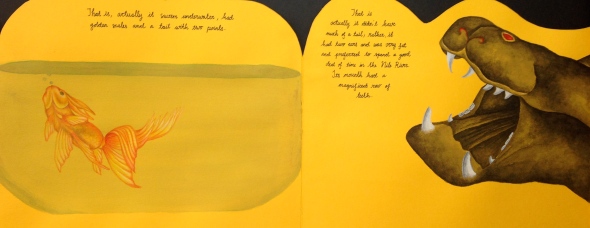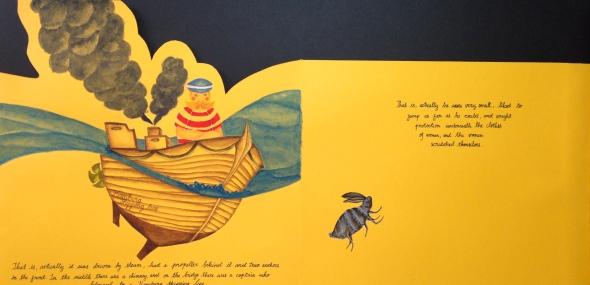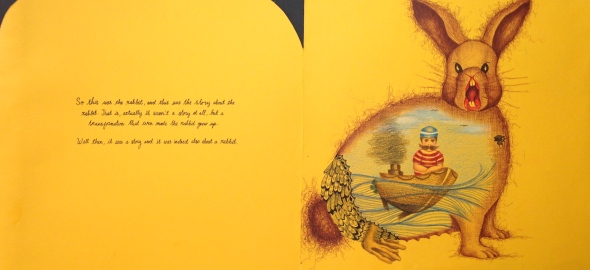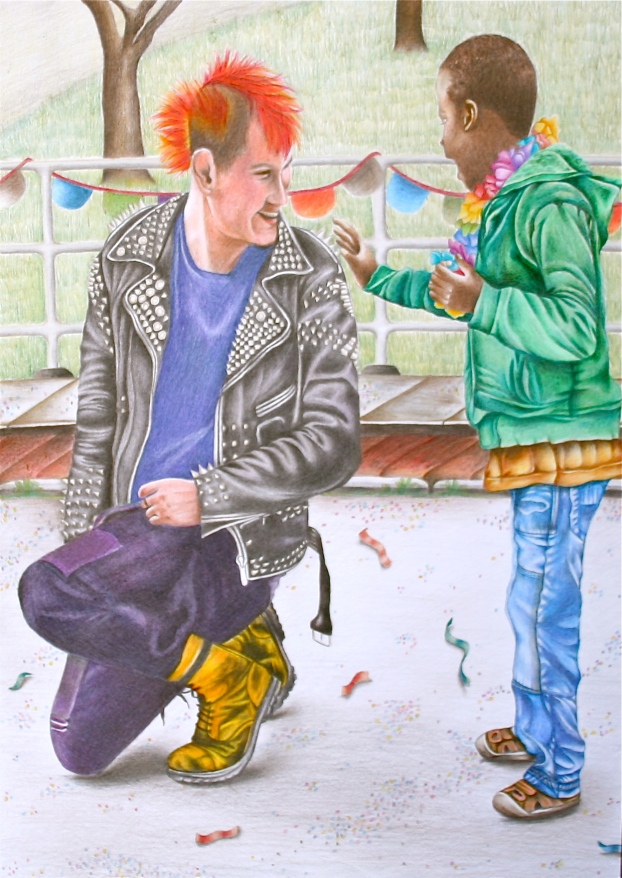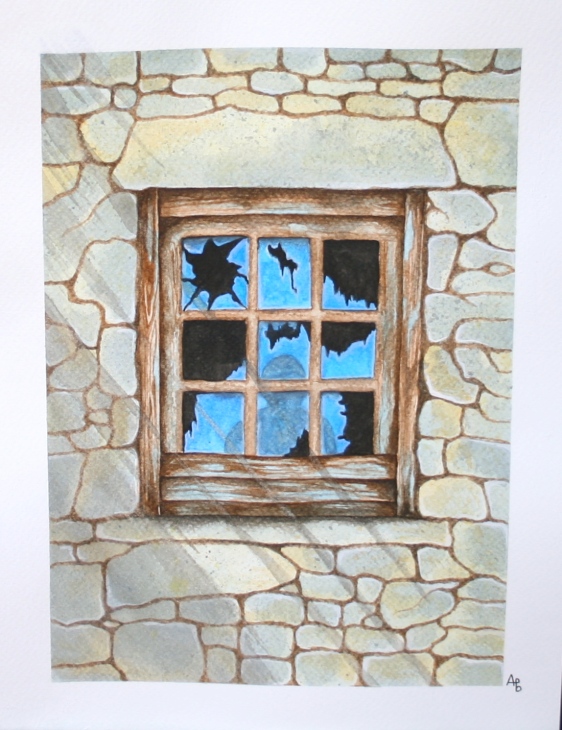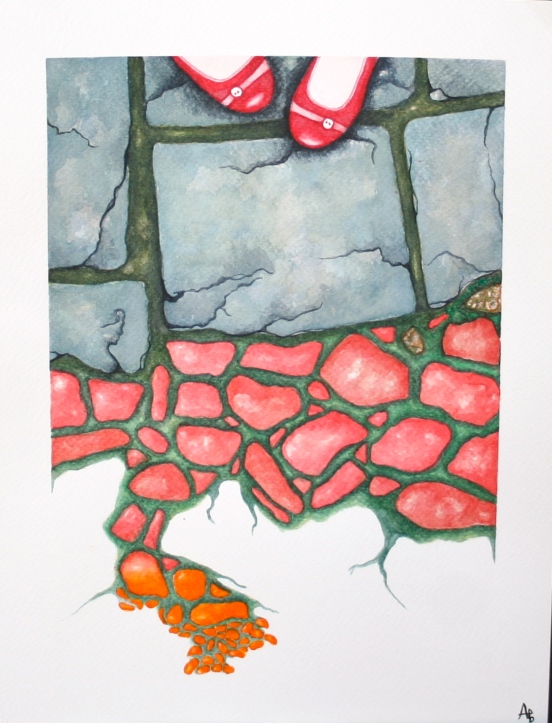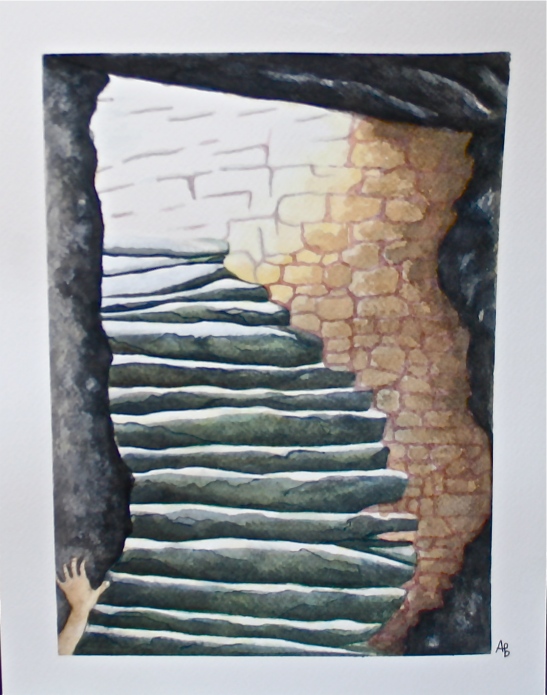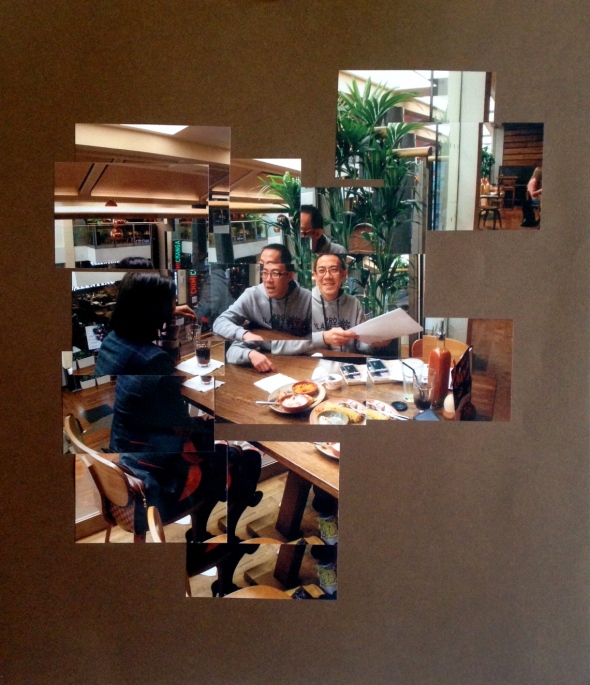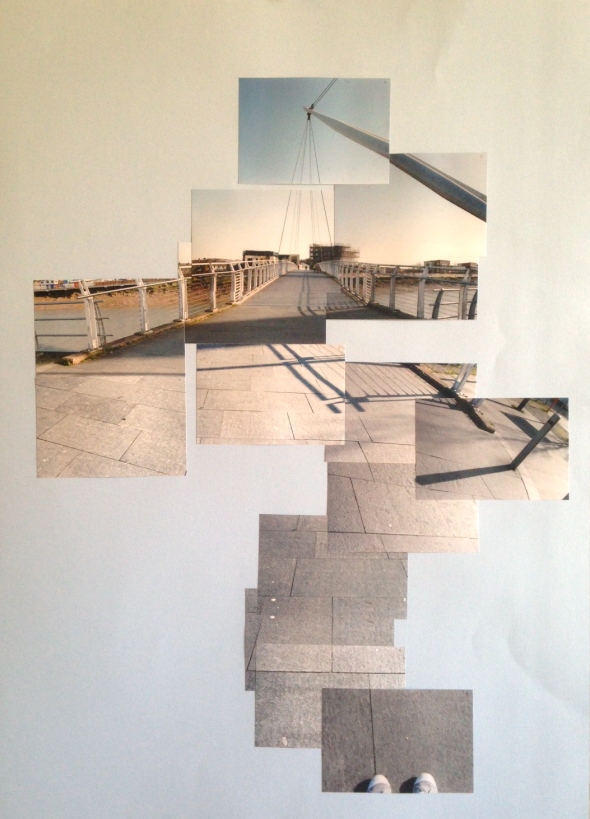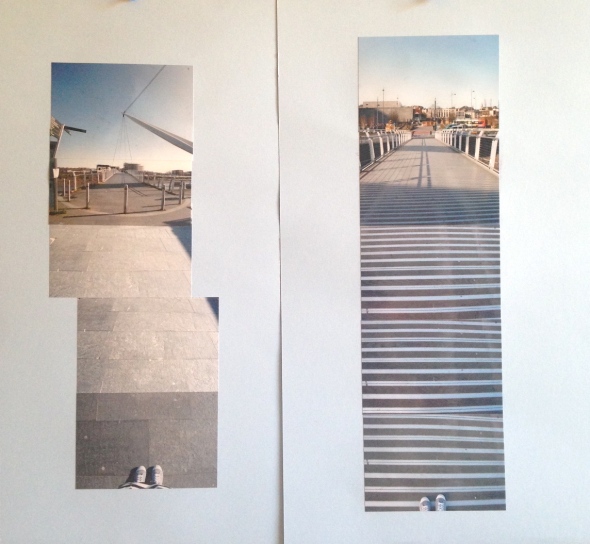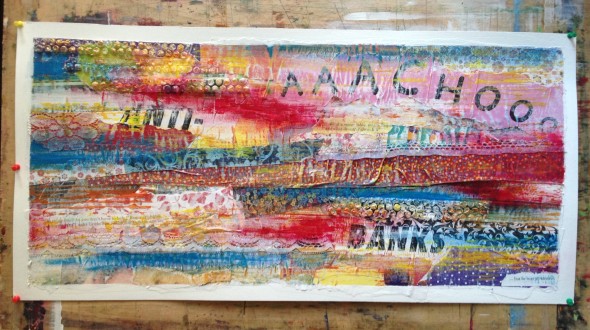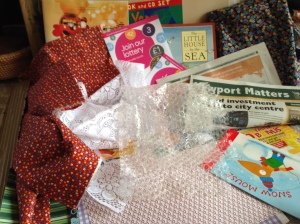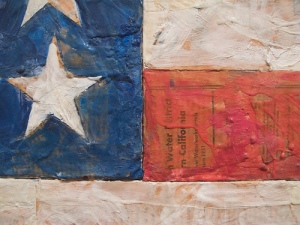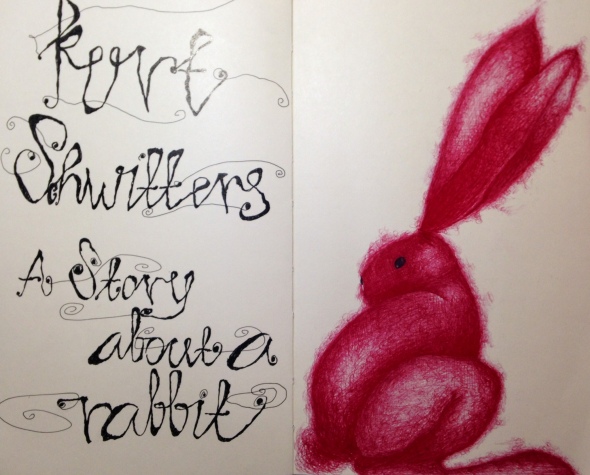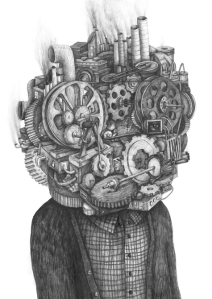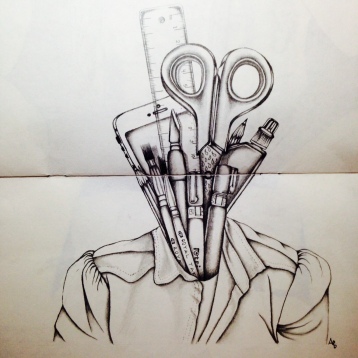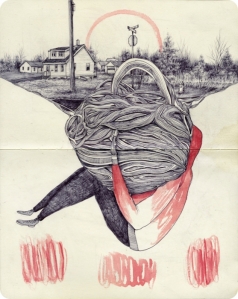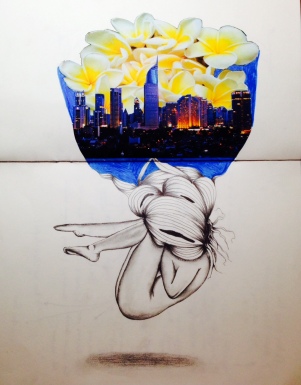A story about a rabbit by Kurt Schwitters
Posted: May 3, 2014 Filed under: Constellation, Field, Individual | Tags: art, book, illustration, inspiration, Kurt Schwitters Leave a comment
This is the final book of “A story about a rabbit” by Kurt Schwitters. During the development of the book and based on progress feedback I’ve received, I feel that this project is more suitable for my Constellation – defamiliarization theory practice. The design is influenced by Laura Hyde illustration. Even though I won’t be submitting this piece as one of Individual – Field project work, I’m glad that I found this book as inspiration and narrative practice as well as a material for my Constellation essay.
During his life, Kurt Schwitters had produced many publications, paintings, collage/assemblage art works which influenced many great artists such as Jasper Johns and Robert Rauschenberg. This book was one of his publication.
Once upon a time there was a brown rabbit that had long hair and long ears and a short tail, and it hopped around the corner even when there wasn’t a corner to hop around. Actually it wasn’t brown, but rosy, and its hair was actually short, and its tail was curly. And actually it didn’t hop at all but grunted and dug in the mud. Then it looked muddy and no longer rosy, but rather dark grey red. And if it had small piglets, they suckled on the rabbit. However, actually it wasn’t grey red, rather grey white, and it had many feathers and a pair of beautiful wings, but it couldn’t fly. On its legs it had flippers and it swam proudly on the pond in the park, and people who walked by threw it bread crumbs. That is, actually it swam underwater, had golden scales and a tail with two points. That is actually it didn’t have much of a tail; rather, it had two ears and was very fat and preferred to spend a good deal of time in the Nile River. Its mouth had a magnificent row of teeth. That is, actually it was driven by steam, had a propeller behind it and two anchors in the front. In the middle there was a chimney, and on the bridge there was a captain who belonged to a Hamburg shipping line. That is, actually he was very small, liked to jump as far as he could, and sought protection underneath the clothes of women, and the women scratched themselves. So this was the rabbit, and this was the story about the rabbit. That is, actually it wasn’t a story at all, but a transformation that even made the rabbit grow up.
Well then, it was a story and it was indeed also about a rabbit.
From Kurt Schwitters: Lucky Hans and other Merz fairy tales – translated by Jack Zipes. 2009
Freedom to live life as individuals in multicultural cities
Posted: May 2, 2014 Filed under: Field, Individual | Tags: art, colour pencil, culture, drawing Leave a comment
As one of body of work, I have produced a drawing as a response to cultural identity in a multiculture city research I’ve conducted. The research was implemented through informal interviews in March and April 2014 with the locals (five Newporters) and migrants (eight participants from USA, South Africa, South East Asia ) who have been living in the city for more than five years. My main question in the interview was “Is it considered to be important to maintain one’s identity and characteristics?”. As we live in multicultural country, the research participants believed that it is considered to be important to maintain their cultural identity. Culture defines their identity, it contributes to how they see themselves and the groups or community they are in. Every cultural group or ethic or community have their own way of living, beliefs and own values. A shared cultural heritage (food, language, values or beliefs) bonds people together and creates sense of belonging through tolerance and acceptance.
So based on the research I decided to produce an illustration that depict about celebration of culture and tolerance. The above drawing is inspired from Norman Rockwell’s painting “Moving in” which was inspired by the early integration movement in America. The figures in the drawing is from this photography by anonymous.
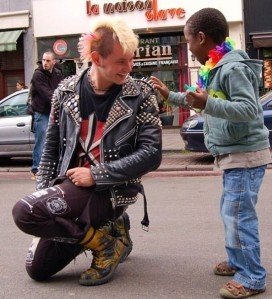
Photo by anonymous: http://www.distractify.netdna-cdn.com/wp-content/uploads//2014/04/454-934x.jpg, date: 16 Apr 2014
I’ve changed few colour and objects in the photograph so that I won’t breach copyright law and also changed the background into a festive – carnival atmosphere in order to get the feel that I wanted. I’m happy with how the design and drawing turned out. I think by altering the background I have achieved what I wanted which is to include cultural tolerance and acceptance message within my drawing. What I’d like to do in the future is to do more life and reportage drawings. Norman Rockwell’s works has inspired me to learn more about the art of history and editorial illustration.
Scenic route
Posted: May 1, 2014 Filed under: Field, Individual | Tags: #Newport city, art, painting, watercolour Leave a commentI enjoyed my time exploring the outskirt of Newport, so I came up with these traditional style paintings of watercolour inspired by the places I’ve visited. Locations that based these paintings are Tredegar house, abandon barn in Bishton, and Chepstow garden and grottoes. Inspired by David Hockey’s photo collage idea, I’ve included part of myself in the painting, the effect of this technique is that the artist is as if fully in the picture, but not. In the summer I’d like to continue to produce more observational paintings. It was a good practice to train my senses and painting skill.
A glimpse of Newport
Posted: April 20, 2014 Filed under: Field, Individual | Tags: Newport, Timelapse, video Leave a commentAfter experimenting on how to create time lapse video, here’s a final product of time lapse video of Newport, South Wales. It’s a way of showcasing the city and documenting my exploration. The video was made with Lapseit App on iPhone5. Locations in the video are Llanmartin bridge & field, Newport city market, Tredegar house, and town centre view from NCP car park. Video editor I used is VideoPad software and music is edited by me copyright to BFM Music “Ray of light” by Madonna.
It was a shame that I couldn’t include Newport transporter bridge in this video because the bridge is currently shut and opens only in the summer. I also plan to shoot a video at Tata Steel plant but due to no permission granted, I couldn’t show a glimpse of steel workers’ life at work, which would have been great considering steel industry was a big part of Newport economy development.
I’ve gained many experiences from this project, especially in dealing with people and finding a story source for future project e.g. the vibrant life at the Newport city market.
Photocollage
Posted: April 13, 2014 Filed under: Field, Individual | Tags: photo collage Leave a commentPhoto collage seems to be a perfect way of documenting my interview participants for my “identity” theme project. The technique I used is inspired from David Hockney‘s photo collage. I like the idea of recording the passing of time or space in a unconventional photography way. The effect of this technique is that the artist is as if fully in the picture, but not. So here are the finish works:
Photo-collage by David Hockney
Posted: April 13, 2014 Filed under: Field, Individual | Tags: David Hockney, Photocollage, Polaroids, The Brooklyn Bridge 1 CommentAlong with the rise of popularity of photography in art, David Hockney started making collages of photographs by using polaroid camera. He began using polaroids arranged symmetrically edge to edge with white borders uncut, and then moved the borderless prints from 35 mm negatives used in a quite different way, with the prints over lapping and sequence of prints therefore able to turn corners, making curving forms and lead the eye in whatever direction the artist wanted (Paul Melia, 1996, p. 108).
He found there’s a limitation in the still photograph. He believed that it doesn’t have any life in time (Hockney 19985: 9-11). The time is the same in one corner of a photograph as in another because the image is made all at once. He argues that a painting is different because it takes time to make and marks an accumulation of decisions over time. (Paul Melia, 1996, p. 108). He wanted the viewer to not be close to the object that’s being presented but to be in the experience. So he began to experiment with technique that can make photograph to have the same feel and experience as a painting by loosing the illusion of distance.
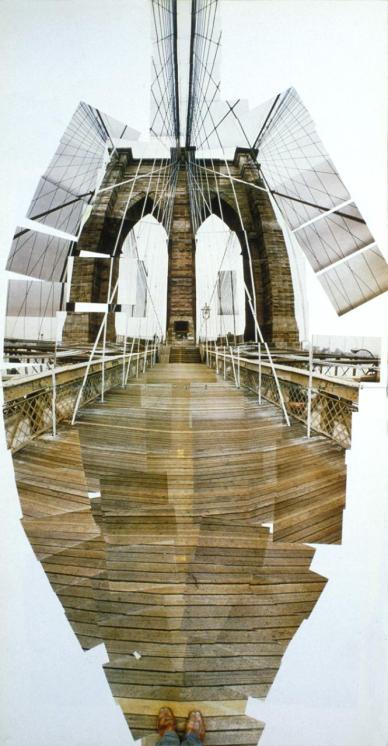
“The Brooklyn Bridge” Nov. 28, 1982, David Hockney -https://infrascapedesign.files.wordpress.com/2010/09/brooklynbridge.jpg – date: 13/04/14
He chose to use collage technique because it allows multiplicity of reference and memory as well as description. He directed the camera on one point, then on each joining point until he marked out and recorded an area of real space. He moved and when he took the shots therefore the passing of time was registered, and a relationship exists between the time taken in creating the shots (rectangle images) and the spaces that these rectangles mark out. Each component of which represents one exposure and a step he took (visible at the bottom collage), the whole is equivalent of the path he walked on. Each square now can now be thought of as a unit of time or as a unit of space. The artist is as if fully in the picture, but not.
Used objects by Newport-ers
Posted: March 28, 2014 Filed under: Field, Individual | Tags: City of Newport, collage, found object Leave a commentI’m always interested in drawing and documenting found objects or still life objects. During my exploration of Newport city, I’ve collected quite a lot of leaflets, local newspaper, free magazines, tickets and shop receipts. So I decided to make an artwork to document these objects and I think that Jasper Johns‘ collage of found object technique suits the project. In order to add context into the artwork, I’ve bought objects from the local charity shops as well.
The reason why I bought objects from local charity shops is because I think that the stuff the shops sell mirrors the people of Newport. There’re stories behind every objects I found and bought. What ever or where ever their journey were, now it’s all collected in one. I’ve also transformed found objects to better use rather than chucking them in the bin. The collage contains:
- Images and words from children’s books I bought from charity shop (“It’s Your Turn, Roger!” by Susanna Gretz, “The Little House by the Sea” by Benedict Blathwayt, and “The Very Lazy Ladybird” by Isobel Finn & Jack Tickle).
- Newport city newsletter.
- Shop fliers and restaurant receipts.
- Local magazines.
- Fabrics bought from local charity shops
- Bubble wrap I picked up next to my neighbour’s recycle bin.
- Few decorative papers from my study room.
Flag (1954-1955) by Jasper Johns
Posted: March 28, 2014 Filed under: Field, Individual | Tags: American flag, Jasper Johns 1 CommentJasper Johns is one of most important and influential American born artist of the twentieth century, especially in pop, minimal and conceptual art movements. Johns’ Flag (1954-1955) is a painting of American flag in medium of encaustic, oil, and collage on fabric mounted on plywood. The objects in his painting were things that are familiar, for example the American flag, target, ale cans, U.S. maps, and stencil, and also found objects in his studio and the things that he previously seen. His technique is consciously controlled rather than spontaneous.
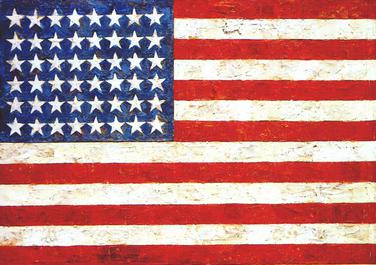
Jasper Johns ‘Flag’ – http://www.michaelarnoldart.com/flag.jpeg date: 28/03/14
“One night I dreamed that I painted a large American flag,” Johns has said of this work, “and the next morning I got up and I went out and bought the materials to begin it.” Those materials included three canvases that he mounted on plywood, strips of newspaper, and encaustic paint—a mixture of pigment and molten wax that has formed a surface of lumps and smears. The newspaper scraps visible beneath the stripes and forty-eight stars lend this icon historical specificity. The American flag is something “the mind already knows,” Johns has said, but its execution complicates the representation and invites close inspection” (Jasper Johns).
I think, the American flag was his way to show patriotism (he was named after a military hero, Sergeant William Jasper, raised the flag in a brave action during the Revolutionary War). The meaning of the artwork will be distinguished from who is viewing the flag, which era they are from or where the viewer come from. This creates constant reinterpretation. So I think the use of familiar objects is quite effective for the artist to engage the viewers and inject their personal perceptions on the meaning of the artwork.
The close-up image above is to show his collage background (used newspaper and tickets) and encaustic technique in the Flag painting which sometime couldn’t be shown on re-production print.
The story about a rabbit – development
Posted: February 21, 2014 Filed under: Constellation, Field, Individual | Tags: book, Illustrations, Kurt Schwitters, rabbit, transformation 1 CommentWhen I was looking for inspiration for my CITY project from film/song/poetry and books that have similar theme of cultural identity and its relationship with changing one’s behaviour and characteristics, I came across this beautiful story from a book written by Kurt Schwitters titled ‘The story about a rabbit‘. It’s a story of a rabbit who experienced a transformation into different animal forms.
Once upon a time there was a brown rabbit that had long hair and long ears and a short tail, and it hopped around the corner even when there wasn’t a corner to hop around. Actually it wasn’t brown, but rosy, and its hair was actually short, and its tail was curly. And actually it didn’t hop at all but grunted and dug in the mud. Then it looked muddy and no longer rosy, but rather dark grey red. And if it had small piglets, they suckled on the rabbit. However, actually it wasn’t grey red, rather grey white, and it had many feathers and a pair of beautiful wings, but it couldn’t fly. On its legs it had flippers and it swam proudly on the pond in the park, and people who walked by threw it bread crumbs. That is, actually it swam underwater, had golden scales and a tail with two points. That is actually it didn’t have much of a tail; rather, it had two ears and was very fat and preferred to spend a good deal of time in the Nile River. Its mouth had a magnificent row of teeth. That is, actually it was driven by steam, had a propeller behind it and two anchors in the front. In the middle there was a chimney, and on the bridge there was a captain who belonged to a Hamburg shipping line. That is, actually he was very small, liked to jump as far as he could, and sought protection underneath the clothes of women, and the women scratched themselves. So this was the rabbit, and this was the story about the rabbit. That is, actually it wasn’t a story at all, but a transformation that even made the rabbit grow up.
Well then, it was a story and it was indeed also about a rabbit.
From Kurt Schwitters: Lucky Hans and other Merz fairy tales – translated by Jack Zipes. 2009
At first I thought that the rabbit was playing a game of disguise, wearing a costume, a mask to conceal his true identity, but then I realised that he was actually going through some transformations (physical and psychological) that made him grew up. By understanding a little deeper into it, I think that there’s an ambiguity within the story. Schwitters wrote the transformation of the rabbit in incompleteness which invited me to include my psychology perception that is projected onto the story. Which I think this would be an example of constructivist based theory as explained by a famous art historian E.H. Gombrich. I thought that the story apply the constructivist theory since Schwitters was active in International Constructivist Art movement in 1922. Kurt Schwitters is a German artist whose works are heavily influence by Dada movement. His most famous futurist works are those of his collages and assemblage art, which has inspired many other great artists such as Jasper Johns and Robert Rauschenberg
On Feb 13th, 2014 I had a tutorial with my constellation lecturer Dr. Martyn Woodward about the end of term-five minutes presentation. I told him about my idea of Kurt Schwitters’ book in connection with constructivist theory. His feedback was very constructive as he explained to me that the correct theory for the book is in fact Defamiliarization theory by Viktor Shklovsky. He also referred me to a story about the Blind men and an elephant. He inspired me to produce an image of ‘combine’ rabbit transformation. I will explain more in my next post including the final images of the story about a rabbit book for my personal-field project.
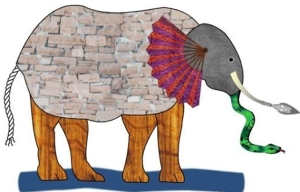
Blind Men and an elephant -http://3.bp.blogspot.com/-W0sLmiBB6cI/Tuoeuctkz3I/AAAAAAAAEPY/InVyu4vZTFs/s1600/elephant%255B6%255D.jpg date: Feb 14th, 2014
In regard with my city project, I feel that ‘The story of a rabbit’ reflects what is happening inside the rabbit’s character and identity. Although he transformed into different animal forms he is still the same rabbit. I found this connection between identity, transformation and relationship between them interesting. I talked to some of migrants coming from Asia, Africa and America who have been living in Newport for more than five years and asked them their opinions about the integration of new culture in the new society and their origin culture and I gathered that somehow they all have experienced transformation. The transformation is shown in the behaviour, language (e.g. accent), the way they present themselves, the political views, religion and e.t.c. So, based on this book and my findings, I would like to make a constantina book that depict the rabbit’s transformation as one of my final works.
Artist Research #1
Posted: February 16, 2014 Filed under: Field, Individual | Tags: collage, Illustrations, inspiration, PatPerry, StefanZsaitsits Leave a commentI’ve been looking into artists (illustration and fine art) to inspire me in designing one of my final works. My first artist inspiration is Stefan Zsaitsits. His illustration work is intricate and detailed. He works mainly using pencils and his subject are portrait and psychology. My second artist inspiration is Pat Perry. Her work is very expressive and surrealistic. She get her inspirations from her journey/travel to other countries and cities. These are two of their artworks that inspire me:
The body in the fourth image (collage) is in its fetal position as if it’s mimicking the fetus inside a womb which is connected with the umbilical cord to the collage image above it. The collage is Jakarta city skyline and frangipani flowers that grow all around Indonesia. This collage is to reflect my origin identity. I found both of of the illustrators are heavily influence by surrealism. They have great attention to detail. These are few things that I would like to take on board when planning my design for my final works.

